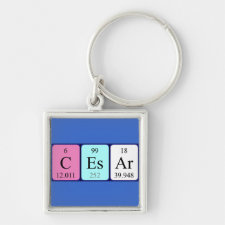
Authors: Germiniano TO, Corazza MZ, Segatelli MG, Ribeiro ES, Yabe MJS, Galunin E, Tarley CRT
Article Title: Synthesis of novel copper ion-selective material based on hierarchically imprinted cross-linked poly(acrylamide-co-ethylene glycol dimethacrylate).
Publication date: 2014
Journal: Reactive and Functional Polymers
Volume: 82
Page numbers: 72-80.
DOI: 10.1016/j.reactfunctpolym.2014.05.012
Alternative URL: http://www.sciencedirect.com/science/article/pii/S1381514814001084
Abstract: A novel hierarchically imprinted cross-linked poly(acrylamide-co-ethylene glycol dimethacrylate) using a double-imprinting approach for the Cu2+ selective separation from aqueous medium was prepared. In the imprinting process, both Cu2+ ions and surfactant micelles (cetyltrimethylammonium bromide - CTAB) were employed as templates. The hierarchically imprinted organic polymer named (IIP-CTAB), single-imprinted (IIP-no CTAB) and non-imprinted (NIP-CTAB and NIP-no CTAB) polymers were characterized by SEM, FTIR, TG, elemental analysis and textural data from BET (Brunauer-Emmett-Teller) and BJH (Barrett-Joyner-Halenda). Compared to these materials, IIP-CTAB showed higher selectivity, specific surface area and adsorption capacity toward Cu2+ ions. Good selectivity for Cu2+ was obtained for the Cu2+/Cd2+, Cu2+/Zn2+ and Cu2+/Co2+ systems when IIP-CTAB was compared to the single-imprinted (IIP-no CTAB) and non double-imprinted polymer (NIP-CTAB), thereby confirming the improvement in the polymer selectivity due to double-imprinting effect. For adsorption kinetic data, the best fit was provided with the pseudo-second-order model for the four materials, thereby indicating the chemical nature of the Cu2+ adsorption process. Cu2+ adsorption under equilibrium was found to follow dual-site Langmuir-Freundlich model isotherm, thus suggesting the existence of adsorption sites with low and high binding energy on the adsorbent surface. From column experiments 600 adsorption-desorption cycles using 1.8 mol L-1 HNO3 as eluent confirmed the great recoverability of adsorbent. The synthesis approach here investigated has been found to be very attractive for the designing of organic ion imprinted polymer and can be expanded to the other polymers to improve performance of ion imprinted polymers in the field of solid phase extraction
Template and target information: copper ion, Cu(II)
Author keywords: Hierarchically imprinted organic polymer, selectivity, Cu2+, Adsorption Studies, isotherm, kinetics



Join the Society for Molecular Imprinting

New items RSS feed
Sign-up for e-mail updates:
Choose between receiving an occasional newsletter or more frequent e-mail alerts.
Click here to go to the sign-up page.
Is your name elemental or peptidic? Enter your name and find out by clicking either of the buttons below!
Other products you may like:
 MIPdatabase
MIPdatabase









